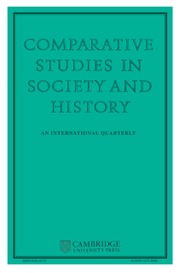Article contents
American Historiography and Comparative Analysis: Further Reflections*
Published online by Cambridge University Press: 03 June 2009
Extract
In the seventeenth century America escaped from the world, in the twentieth century it has been forced to return to it. This cycle contains the drama of the American historical consciousness which protected America's provincialism in the past but is bound now, in the age of the reverse migration, to serve as an instrument of its dissolution.
Information
- Type
- America and Europe
- Information
- Copyright
- Copyright © Society for the Comparative Study of Society and History 1963
References
1 In developing this concept I have been indebted to a conference on certain societies with Professors Kenneth McRae, Richard Morse, Richard Rosecrance, and Leonard Thompson in January, 1961. The concept as it affects these societies will appear shortly in a series of essays with this group, The Founding of New Societies: Studies in the History of the United States, Latin America, South Africa, Canada and Australia.
2 Turner, Frederick Jackson, The Frontier in American History (New York, 1950) p. 269.Google Scholar
3 I have discussed the psychological comparison of flight and revolution in The Liberal Tradition in America (New York, 1955), especially pp. 64–65.Google Scholar
4 Bradford, William, History of Plymouth Plantation (Boston, 1856), p. 79.Google Scholar
5 Mather, Cotton, Magnalia Christi Americana (Hartford, 1852–1853), Vol. I, p. 25.Google Scholar
6 Bancroft, George, A History of the United States (Boston, 1834), Vol. I, pp. 507–508.Google Scholar
7 Johnson's Wonder-Working Providence, 1628–1651, Jameson, J. Franklin, ed. (New York, 1910), p. 53.Google Scholar
8 A History of the United States, Vol. I, p. 1.
9 Wilson, Woodrow, “The Significance of American History”, Harper's Encyclopedia of United States History (New York, 1902), p. xxvii.Google Scholar
10 Theory and Practice in Historical Study: A Report of the Committee on Historiography, Social Science Research Council (New York, 1946), pp. 30ff.Google Scholar
11 Adams, Herbert B., The Germanic Origins of New England Towns (Baltimore, 1882), p. 38.Google Scholar
12 The Frontier in American History, p. 3.
13 Ibid., Preface.
14 a ibid., p. 3.
- 5
- Cited by

